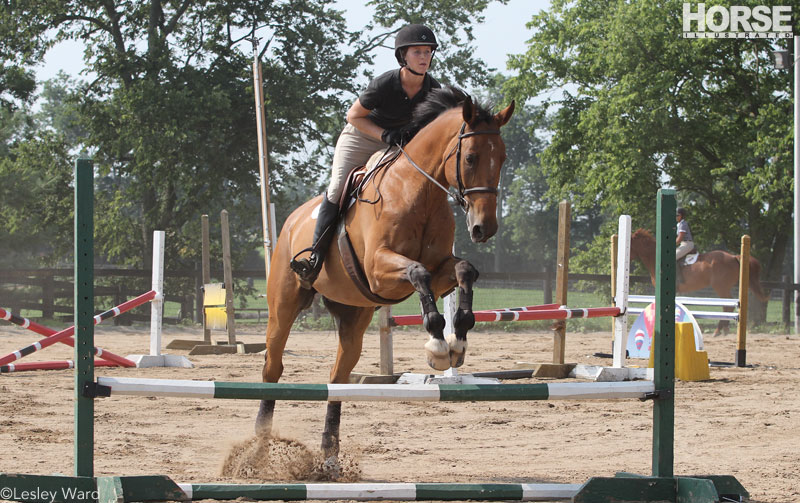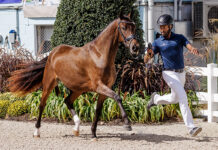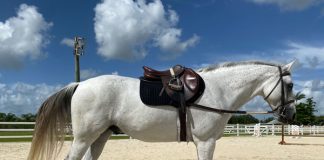
Q: I have a high-energy mare that gets really strong and quick whenever we jump. She pulls on the bit, and I have a hard time slowing her down. Do you have any suggestions on how I can make her more of a hunter and less of a jumper?
First, consult with your vet to formulate a diet that provides adequate nutrition without adding unnecessary energy. Then give your mare opportunities to work off her “yippees” before you ride. Boot up her legs, grab a longe whip, and work her in a round pen or on a longeline before you climb into the saddle.
Stop jumping for now and focus on flatwork. Your mare ignores your requests to slow down and maintain a steady pace, especially when you’re cantering to jumps. When she leans on the bit during flatwork, correct her with a meaningful half-halt, and then soften the reins as a reward. Downward transitions will also make her lighter in the mouth, as she’ll be forced to redistribute her weight from her front end onto her hindquarters. Repetitive work on a large circle, particularly at the trot and canter, will encourage your mare to collect (compress) her stride. When you can adjust her length of stride, you’ll gain control over her speed. She’s not ready to resume jumping until she’ll canter over individual ground poles at a consistent, controlled pace.
Be patient as you reintroduce jumping. Expect to spend countless sessions trotting low, single jumps. If she gets strong or quick on an approach, pull her up, allow her to compose herself, then circle around and come at it again. Don’t canter any jumps until your mare understands this new agenda. As you add course elements, pay attention to your mare’s behavior. If she reverts to winding up and getting strong, she’s exhibiting anxiety. You’re probably proceeding too quickly in your reschooling. Return to her comfort zone for a while.
Finally, seek honest feedback on your horsemanship from a professional coach or trainer. Without realizing it, you may be gripping with your heels or pushing with your seatbones, essentially revving up your mare’s engine. Once you’ve created that much energy, you literally end up with too much horse on your hands. Altering your riding style to a somewhat more passive half-seat or two-point position may help your mare maintain her cool as she jumps.
Liked this article? Here are others on working with high-energy horses:
Making the Most of a Hot Horse
Brake Failure on the Trail
During her lengthy show career on the hunter/jumper circuit, CINDY HALE won more than 20 medals for hunt seat equitation. She currently serves as a judge at local and regional open horse shows.
This article originally appeared in the July 2014 issue of Horse Illustrated magazine. Click here to subscribe!







Wow, that would be scary, but good advise.
I have a pretty headstrong, excitable, and fast hunter too… my trainer used to make us halt three strides before the fence and then 5 strides after. And yes, that will probably get ugly the first few times if she’s used to running through your hands. I have also found it useful – if used SPARINGLY – to use a kimberwick bit… but my pony also could throw quite a fit and keeping her head up was half the battle of retraining her to not run off. 🙂 Good luck! It all works out – she’s also the bravest horse I’ve ever ridden and was worth every second.
Great advice. And make sure the rider isn’t getting excited when approaching the jump too. That will brush off on the horse.
Thank you for the article. I forwarded it to a friend whose trainer complains that her horse is chargey to the fences. The trainer’s way of controlling the horse is to maintain a death grip on its face. I tried to explain to my friend that the trainer is totally failing to fix the problem. The she needs to teach the horse NOT to charge in the first place. Hopefully, my friend reads this and learns from it.